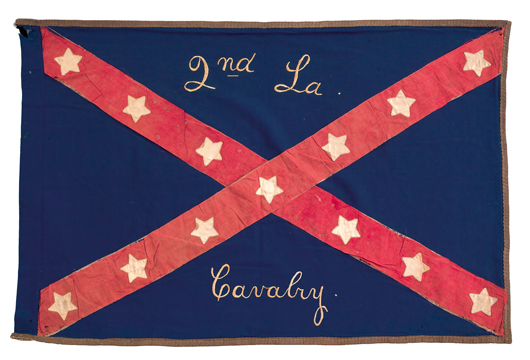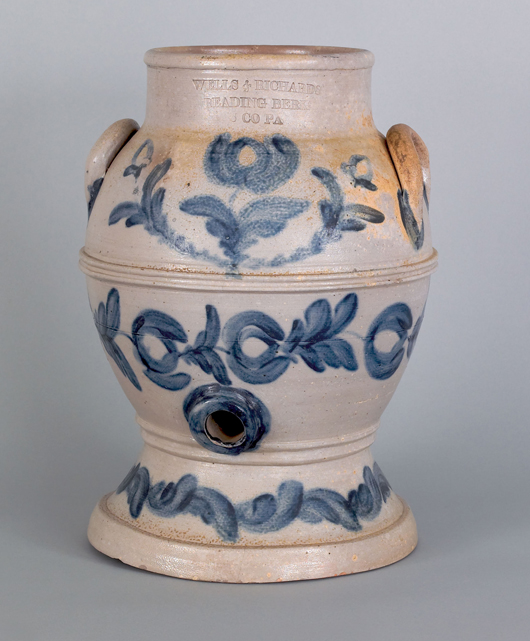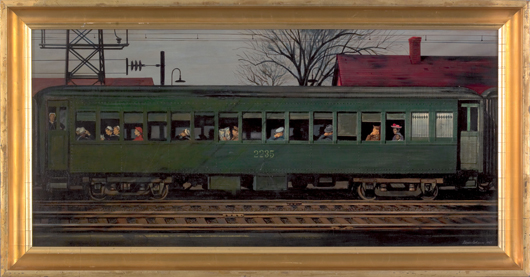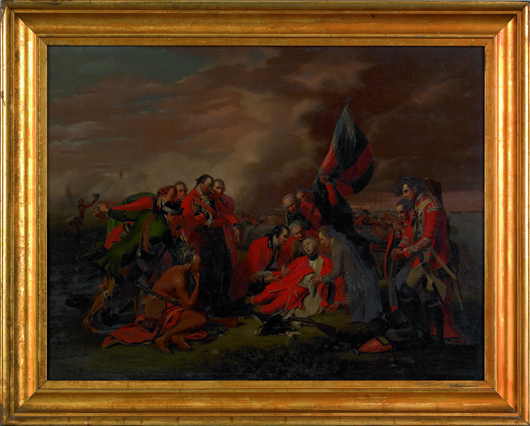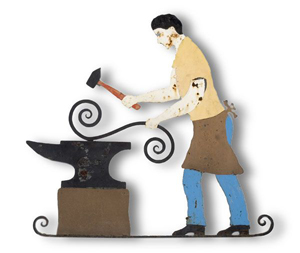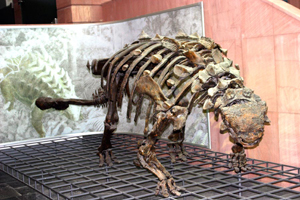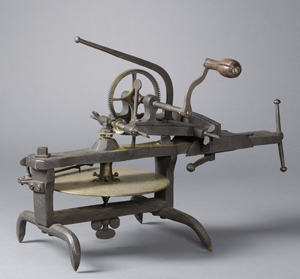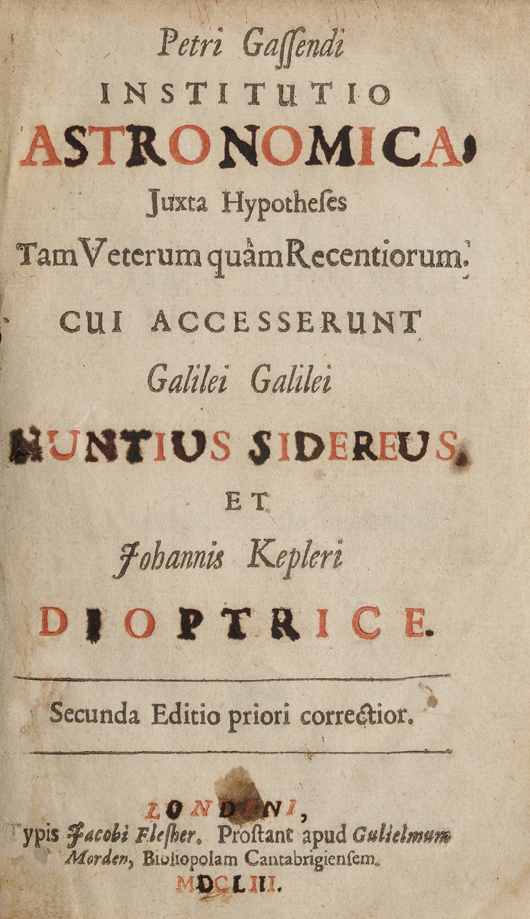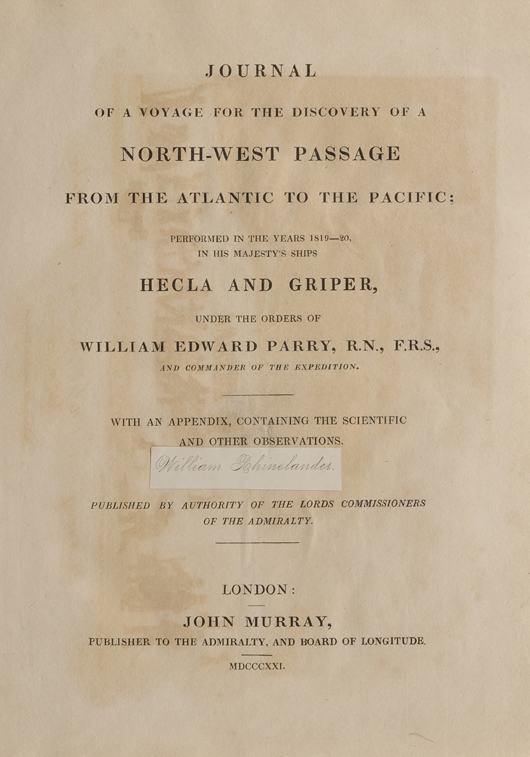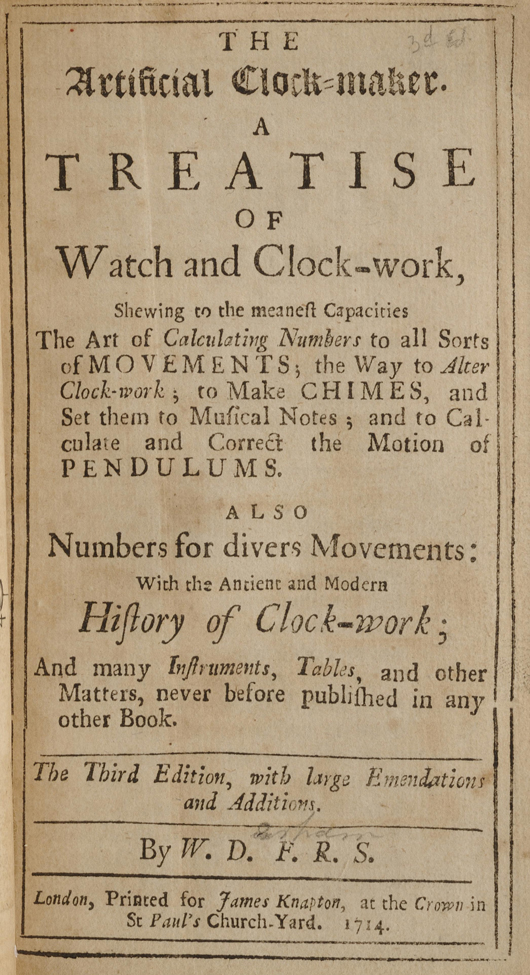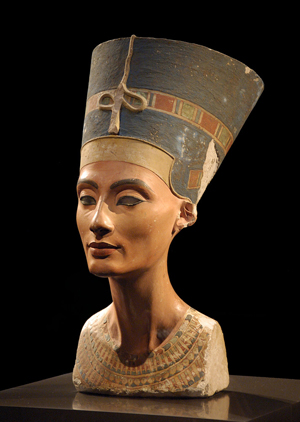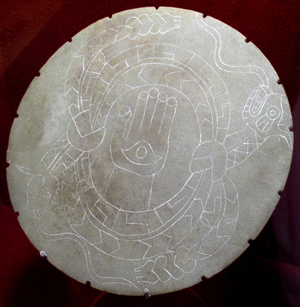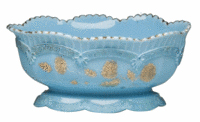
DOWNINGTOWN, Pa. – This year marks the 40th anniversary of Earth Day, and to join in the celebration, Pook & Pook will host an April 23-24 Spring Auction that emphasizes “recycled” antiques made of wood. Internet live bidding will be provided by LiveAuctioneers.com.
“Antique furniture and accessories are unique and handmade, as well as sturdy, utilitarian and quite beautiful,” said Pook & Pook’s co-owner, Debra Pook. “Many examples can be purchased at reasonable prices for the quality in comparison with the price of new pieces – a money saver for young buyers trying to furnish their homes and reduce their carbon footprint.”
The auction will showcase not only a wide array of American and Continental furniture, but also paintings, Oriental rugs and decorative accessories from several important collections and educational institutions, including the Chester County Historical Society, Allentown Art Museum, the Estate of Peter & Marjorie Storm, the Estate of Jeannette Berger, and other sources.
The Friday evening session commences with a selection of fine art. Lot No. 1, a vibrant floral still life by Hobson Lafayette Pittman (est. $10-20,000) should start the sale on a high note. Albert Bierstadt’s oil on paper of a butterfly (est. $10-15,000) is quite an attractive piece. A double sided pencil study titled Miss Lala au Cirque Fernando by Edgar Degas is sure to garner some interest (est. $5-8000). After Benjamin West, a well-executed period rendition of West’s Death of General Wolf is one of the outstanding featured paintings. An analysis by Winterthur Museum dates this painting to around 1815.
Daniel Garber was born in 1880 to a Mennonite farm family near North Manchester, Indiana. He studied with High Breckenridge at the Darby School in Fort Washington, Pa., in the summers of 1899 and 1900. Between 1899 and 1905 Garber enrolled at the Pennsylvania Academy of Fine Arts in Philadelphia, where he studied with William Merritt Chase, Julian Alden Weir and Cecilia Beaux. He is known as one of the most original of the Pennsylvania Impressionists, painting the woodlands and landscapes of Pennsylvania and New Jersey. A brilliant autumn landscape by Daniel Garber titled Brinton’s Mill will be sought after by many. Signed lower right, the painting retains its original Badura frame (est. $100-150,000).
A lovely portrait of Helen Velasquez Chase by her father William Merritt Chase is an enchanting piece (est. $40-70,000). It was originally sold at the Chase estate sale in May 1917. Also offered is a pair of oils by luminist landscape painter Jasper Francis Cropsey of the Hudson River School, New York (est. $20-30,000). Other works include a Walter Koeniger winter landscape, a John Dare Howland buffalo-hunting scene, a charming Ben Austrian of chick and puppy, and a terrific watercolor of ducks landing in a marsh by Frank Weston Benson.
The Joseph Townsend family Samuel Malkin slip-decorated charger dated 1726 will be sold on Friday evening. The large plate has a dotted border surrounding three arched panels, the center one inscribed in raised press molded lettering with the Biblical reference “Remember Lot’s Wife Luke 17:32 1726,” surmounted by an image of Lot’s wife flanked by trumpeting angels and the makers initials “SM” in raised relief. The extensive notes and genealogy that accompany this plate suggest that it may be one of the earliest pieces of English tableware used in the colonies. According to family history, the original owner was Joseph Townsend, nephew of Richard Townsend who sailed to America on the Welcome, in the company of William Penn in 1682. An identical press-molded plate resides in the Fitzwilliam Museum, Cambridge, England.
Friday night will continue with a pair of Delaware Valley Chippendale shell-carved dining chairs (est. $8-10,000), an unusual Pennsylvania alphabet quilt (est.$3,500-$5,500), a five-piece, circa-1790 Chinese export garniture set (est. $6-9,000), groups of Anglo-Irish clear glass table objects and a Northampton, Pa., cherry tall-case clock by John Murphy (est. $9-12,000).
Several fine pieces of pottery will be offered, as well as Pennsylvania folk art and painted furniture, a Berks County unicorn dower chest, two Philadelphia painted fireman’s parade hats, a variety of watercolor fraktur and a painted Mahantongo Valley semi-tall chest. A rare double portrait watercolor from the “Reading Artist” is believed to be unique (est. $5-10,000). A circa-1915 American carved and painted pine whirligig, depicting a gentleman wearing a bowler hat and black jacket will cross the block (est. $10-15,000) as will a swell-bodied copper Dexter horse and jockey weathervane (est. $5-10,000).
Items from several museums including the National Association of Watch & Clock Museum, Chester County Historical Society and Mauch Chunk Historical Society will be offered on Friday night. Some of the highlights include a Baltimore Hepplewhite card table, a Pennsylvania tiger maple corner cupboard, a Chester County Queen Anne clock by Chandlee and a French ormolu mounted clock.
Three unusual pieces of Wharton Esherick furniture, purchased by the parents of the consignor from the Esherick workshop, include a coffee table (est. $15-20,000), a set of library steps (est. $10-15,000) and three stools (est. $1,500-2,500).
A nice collection from the Estate of Jeannette Berger of Pound Ridge, N.Y., will be offered throughout the sale. This includes a selection of American and English samplers and needlework, a Philadelphia tall-case clock by George Miller, Pennsylvania and New England furniture, Chinese export rose medallion and other accessory objects.
A group of Georgian furniture will be sold on Friday and Saturday including a set of 12 dining chairs, a mahogany breakfast table, work stands, commode, bottle case and many other items. A circa-1815 Regency mahogany drum table stamped “Gillows-Lancaster,” with a round leather inset top, will attract bidders.
Made for John Glendy Stuart of Baltimore, is an intricate appliquéd and embroidered album quilt (est. $5-8,000). This quilt features 25 floral and geometric decorated blocks.
From Frederick Town, Maryland comes a Chippendale cherry tall-case clock inscribed “Fredk Nusz” (est. $8-12,000). Also of interest in the furniture category is a circa-1800 Virginia Hepplewhite walnut sideboard (est. $10-15,000).
Meriting special mention are two lots originally from the Hermann Goring lodge Carinhalle in East Prussia. The first is a group of engraved silver flatware, made by Puiforcat, Paris. The second is a group of KPM porcelain dinnerware decorated with Goring’s crest, hunting scenes and game animals.
The collection of Peter and Marjorie Storm will be sold on Saturday afternoon. The group covers a wide range of objects from fraktur and folk art to furniture and decoys. Fraktur artist such as the “Cross-legged Angel Artist”, Daniel Otto, Martin Brechall and Heinrich Brachtheiser are represented.
There is a selection of very nice decoys. Shorebirds from the eastern United States are well represented with a nice yellowlegs attributed to Harry Shourdes, a William Bowman style yellowlegs, a John Dilley plover as well as other examples from New Jersey, Massachusetts, New York and Martha’s Vineyard. There is also an Ira Hudson brant as well as Illinois River and Wisconsin decoys. A group of fish decoys and vintage fishing lures is also included in the offerings.
An important Confederate Civil War flag for the Second Louisiana Cavalry, captured at Henderson, La., on March 21, 1864 by William Ayers, second sergeant of Company H, 35th Iowa Volunteers, Fifth Infantry, will cross the auction block. The flag was recently deaccessioned from the Southern Oregon Historical Society, where it has resided since the 1950s.
Saturday’s session will conclude with a well-rounded selection of firearms ranging from a Simeon North model 1819 pistol and a Springfield model 1795 flintlock musket, to a US model M1 Garand. The “everything in between” includes a Spencer saddle ring carbine, a James Merrill saddle ring carbine, a Brown Bess flintlock musket, a Harpers Ferry model 1855 rifle, a Japanese matchlock pistol and an Allen & Thurber pepperbox pistol, just to name a few.
For additional information on any item in the sale, call 610-269-4040.
ADDITIONAL LOTS OF NOTE
